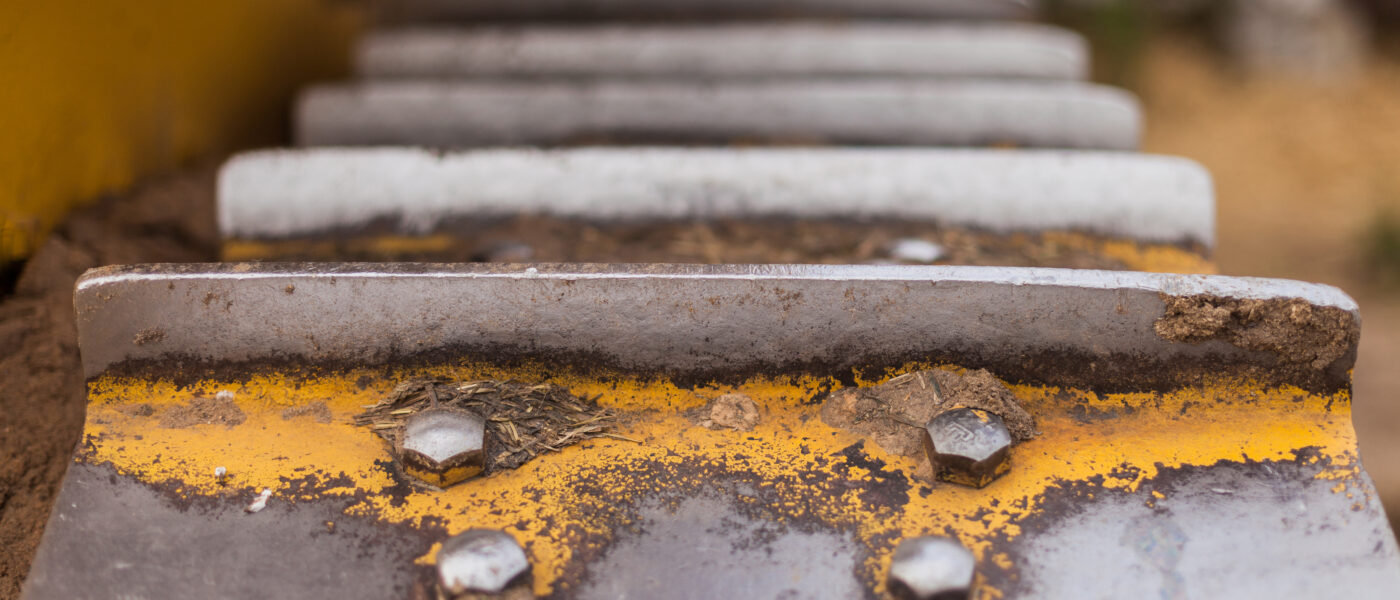Undercarriage wear: One of the largest cost variables in used construction equipment
Blog written by Used Equipment Inspector, Jay Marshall. Jay has been with Finning for more than 35 years

Over the last 18 years as a Used Equipment Inspector, I’ve measured undercarriage on over 1,000 track machines. From dozers, and excavators, to drills and cranes, I’ve seen almost every type of tracked equipment. In this post, I’d like to offer you a few tips and tricks to estimate undercarriage wear – one of the largest cost variables in used equipment valuations.
Spotting undercarriage wear
Undercarriage wear is complex, with many variables and exceptions. Wear life is affected by factors including the type of machine (dozer or excavator), machine configuration (LGP, long frame, etc.), application (mostly stationary or lots of walking), site conditions (high impact, muddy, or abrasive), and more. You need to know what you’re looking at, and where to look.
Tip #1: In general, on dozers, the leading area of wear is external bushing wear. On excavators, the leading area of wear is internal pin and bushing wear.
Excavators: Internal pin and bushing wear
This wear occurs between track link pins and bushings. Think of the pin inside a door hinge, the wear is on the inside of track bushings and cannot be seen – but it can easily be measured. It shows up as an increased track pitch or track chain stretch. During a custom track service inspection, I’ll measure across 5 track pins and use a reference chart to determine wear. If you don’t have a wear chart, here’s a trick:
Tip #2: Look to see how far the front idler is extended relative to the track frame. Walk past similar new machines and pay attention to how far back the front idler is inside the track frame. Now, look at your machine and see how far out the idlers are. If there’s not much noticeable idler extension, then the rails are probably good.
When the idler blocks are pushed out flush with the ends of the track frames, the rails are fully stretched. Idler blocks extended past the ends of the track frames are greater than 100% worn. So, for a rough measurement, idler blocks halfway from the new position to the ends of the track frames are 50% worn.
Now have a look at the rest of the undercarriage components. Look for worn or bent pads, failed rollers, bent carrier rollers, and worn sprockets. The costs add up on all these items but don’t lose sight of the track’s internal stretch.

Fully stretched track rails
Higher hour machines
On high-hour machines; if the tracks are tight, and the idlers are almost fully back to the new position, count the trackpads. Occasionally, a link will get cut out to compensate for excessive track stretch and get a few more hours out of the rails. Common rails are 45 links for short-frame and 49 links for long-track excavators. If you count 48 track shoes on a long-frame excavator, someone has likely cut a link out. Check your parts book or with your dealer to be certain.
Tip # 3: On higher-hour excavators, jump up on the tracks. Put your feet on the outer edges of a track shoe and rock side to side; you’ll quickly discover if you have worn rails or loose trackpads.
Ask an expert
The undercarriage works as a system and is only as good as its most worn component, meaning that accurate undercarriage estimates are vital for operating success. Consider the internal bushing wear first when adding up your overall wear estimate. Rollers and idlers can be changed individually, but if the rails are worn, you’ll need to swap pads & replace the sprocket. Expensive!
Most of us think we can estimate undercarriage wear. Rarely are the results accurate, there’s simply no replacement for a full undercarriage report. Reach out to any one of us experienced experts at Fused, we’re here to help.

